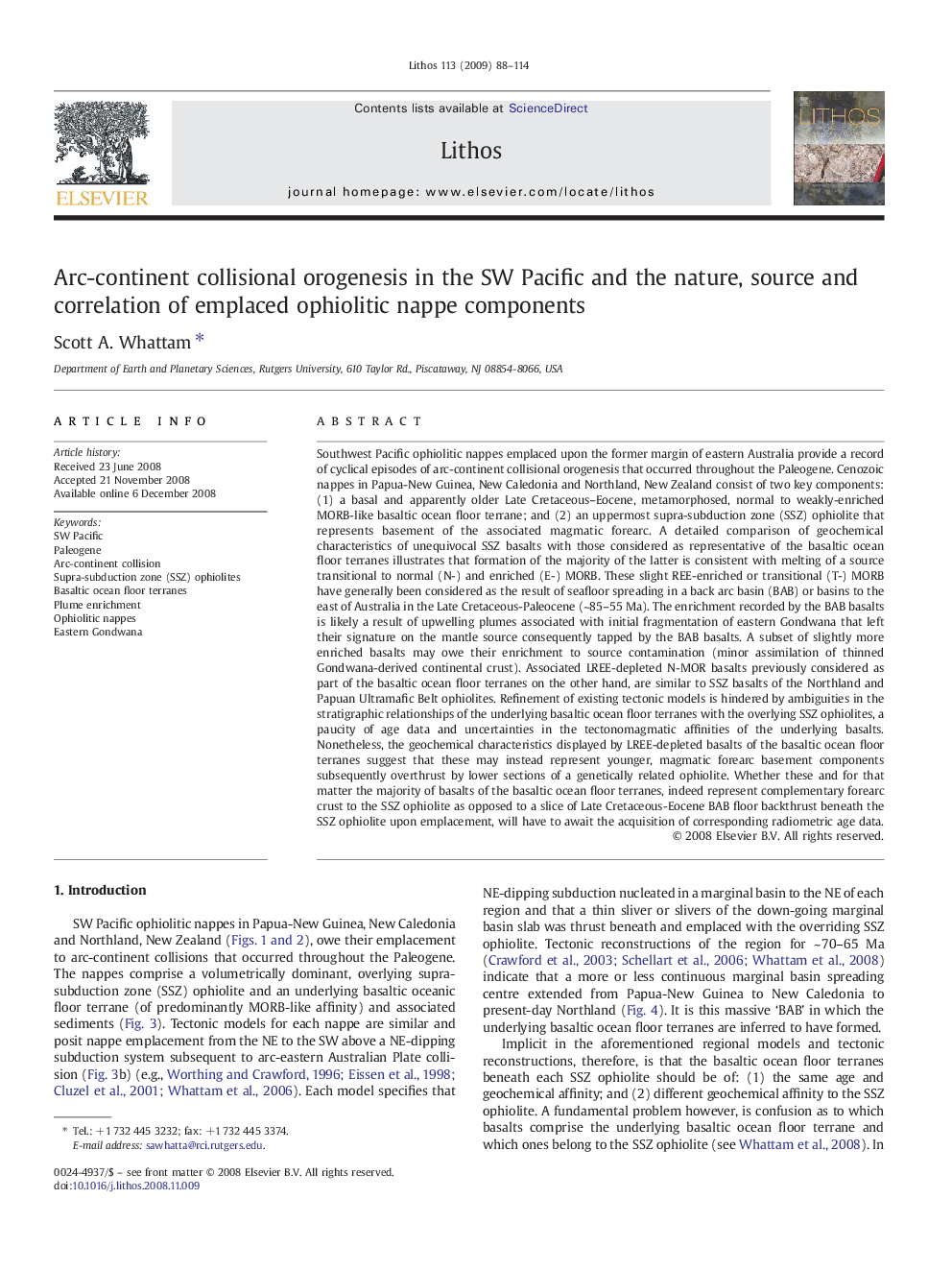| کد مقاله | کد نشریه | سال انتشار | مقاله انگلیسی | نسخه تمام متن |
|---|---|---|---|---|
| 4717007 | 1638739 | 2009 | 27 صفحه PDF | دانلود رایگان |

Southwest Pacific ophiolitic nappes emplaced upon the former margin of eastern Australia provide a record of cyclical episodes of arc-continent collisional orogenesis that occurred throughout the Paleogene. Cenozoic nappes in Papua-New Guinea, New Caledonia and Northland, New Zealand consist of two key components: (1) a basal and apparently older Late Cretaceous–Eocene, metamorphosed, normal to weakly-enriched MORB-like basaltic ocean floor terrane; and (2) an uppermost supra-subduction zone (SSZ) ophiolite that represents basement of the associated magmatic forearc. A detailed comparison of geochemical characteristics of unequivocal SSZ basalts with those considered as representative of the basaltic ocean floor terranes illustrates that formation of the majority of the latter is consistent with melting of a source transitional to normal (N-) and enriched (E-) MORB. These slight REE-enriched or transitional (T-) MORB have generally been considered as the result of seafloor spreading in a back arc basin (BAB) or basins to the east of Australia in the Late Cretaceous-Paleocene (~85–55 Ma). The enrichment recorded by the BAB basalts is likely a result of upwelling plumes associated with initial fragmentation of eastern Gondwana that left their signature on the mantle source consequently tapped by the BAB basalts. A subset of slightly more enriched basalts may owe their enrichment to source contamination (minor assimilation of thinned Gondwana-derived continental crust). Associated LREE-depleted N-MOR basalts previously considered as part of the basaltic ocean floor terranes on the other hand, are similar to SSZ basalts of the Northland and Papuan Ultramafic Belt ophiolites. Refinement of existing tectonic models is hindered by ambiguities in the stratigraphic relationships of the underlying basaltic ocean floor terranes with the overlying SSZ ophiolites, a paucity of age data and uncertainties in the tectonomagmatic affinities of the underlying basalts. Nonetheless, the geochemical characteristics displayed by LREE-depleted basalts of the basaltic ocean floor terranes suggest that these may instead represent younger, magmatic forearc basement components subsequently overthrust by lower sections of a genetically related ophiolite. Whether these and for that matter the majority of basalts of the basaltic ocean floor terranes, indeed represent complementary forearc crust to the SSZ ophiolite as opposed to a slice of Late Cretaceous-Eocene BAB floor backthrust beneath the SSZ ophiolite upon emplacement, will have to await the acquisition of corresponding radiometric age data.
Journal: Lithos - Volume 113, Issues 1–2, November 2009, Pages 88–114